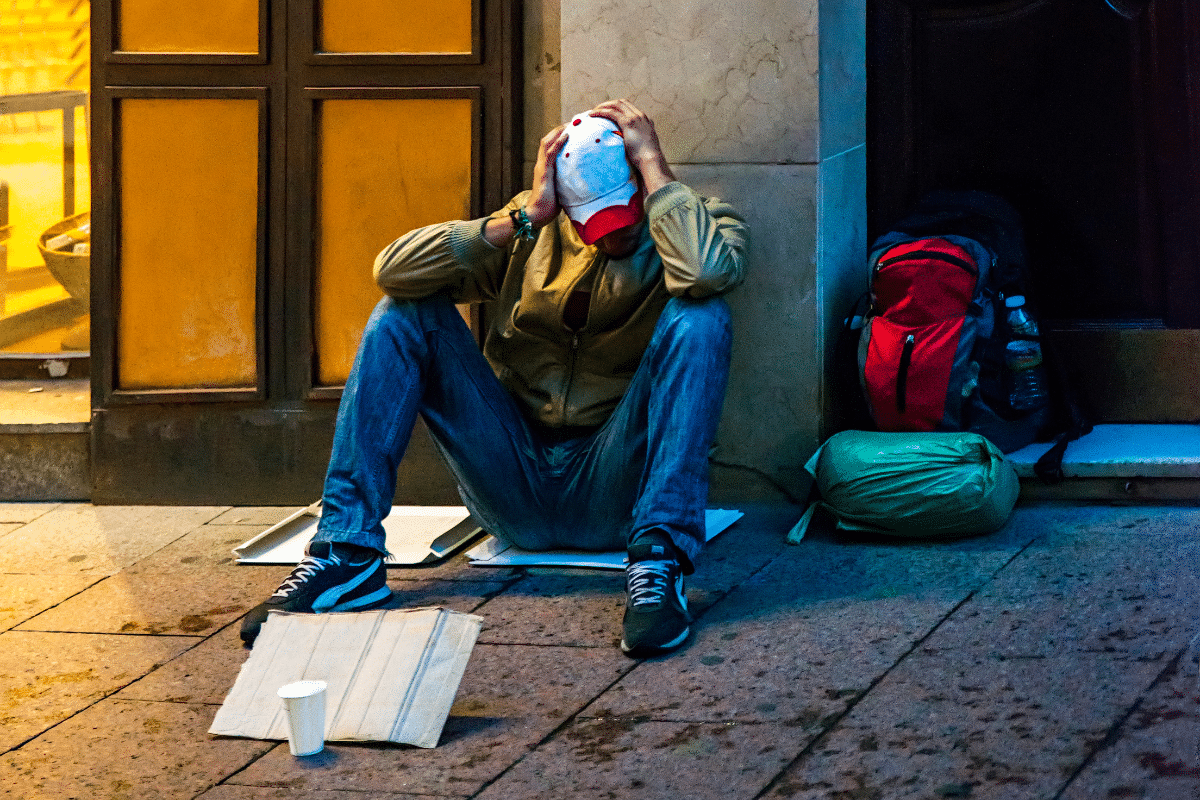It’s no secret that the world is a challenging place to live. Apart from the continuous effects of the Covid-19 pandemic settling in, the cost of living has soared, with record-high inflation and astronomical housing prices. If you live in any metropolitan area, chances are that you’ve seen an increase in homelessness around you. While it’s an issue that can be tricky to navigate, in this blog, we have put together ideas for responding to homelessness in your community and how you can combat it at the local level.
It’s important to note that experiencing homelessness is rarely a choice, but rather the result of a person faIt’s important to note that experiencing homelessness is rarely a choice but rather the result of a person facing many obstacles, including mental health struggles, a lack of resources, and often a lack of support system. In addition, more than half of Americans experiencing homelessness were previously incarcerated. It can be easy to make negative assumptions about those experiencing homelessness, but the more we understand and empathize with homelessness in our communities, the greater the chance we can come together to find solutions.
Understanding the Cycle of Homelessness
Criminalization of Survival Behaviors: Those experiencing homelessness are more likely to be criminalized for normal behaviors like sleeping and going to the bathroom simply because there is nowhere for them to go.
Difficulty Exiting the Justice System: Exiting the justice system becomes difficult due to a lack of affordable housing.
Restrictions on Obtaining Housing: When you have a criminal record, it becomes challenging to gain access to housing.
Increased Risk of Supervision Violations: When you don’t have access to housing or transportation, it becomes nearly impossible to meet expectations for supervision (like drug and alcohol tests), leading to supervision violations.
Here’s What You Can Do to Combat Homelessness Locally
While homelessness needs to be a community effort that involves political leaders, law enforcement, and policymakers, there are still steps you can take as a community member.
Community-led outreach tends to involve clinicians, case workers, and other health professionals and their engagement with people experiencing homelessness in the community, like street outreach. With the right team of professionals, street outreach can be a great way to connect those battling homelessness with the right resources and services available to them.
Some communities form community responder teams comprising social workers, emergency medical personnel, and peer support specialists to shift responsibility away from law enforcement. For people experiencing homelessness, interacting with law enforcement can be a very negative experience, unfortunately. Looking into the creation of one of these community responder teams could be an excellent step for your community in helping those experiencing homelessness.
Other ways to combat homelessness in your community can include the following:
Remember that those experiencing homelessness are humans, too. It can feel more common to ignore those you pass on the street. But as long as you feel safe, it can be day-changing to acknowledge someone struggling with respect and dignity. Never underestimate the power of seeing someone as an equal.
Make care packages. A great activity to do during the holidays is to create a care package for those experiencing homelessness. Consider the essentials someone may need – an energy bar, a bottle of water, a toothbrush, gloves, and lip balm. You can also write a list of resources available to them nearby, so they know their options.
Organize a drive. Getting families together to organize a drive is another great way to combat homelessness in your community. Have a clear mission, recruit a team, choose what you’re collecting, choose a location and organization to donate to, and promote on social media. People want to help out, so making it easy for them to do so can go a long way.
Contact Us Today
Responding to homelessness is challenging, but these tips can help you navigate the issue and improve your community. Here at Advanced Behavioral Health, we care about doing our part to create positive communities for all to live in, especially those who struggle with mental health. If we can help you, your family, or someone close to you, reach out to us by visiting our website or calling us at 301-345-1022. Our team of experts provides a range of services, including youth mentoring, clinical-based services, and off-site counseling. Get in touch with us today!
